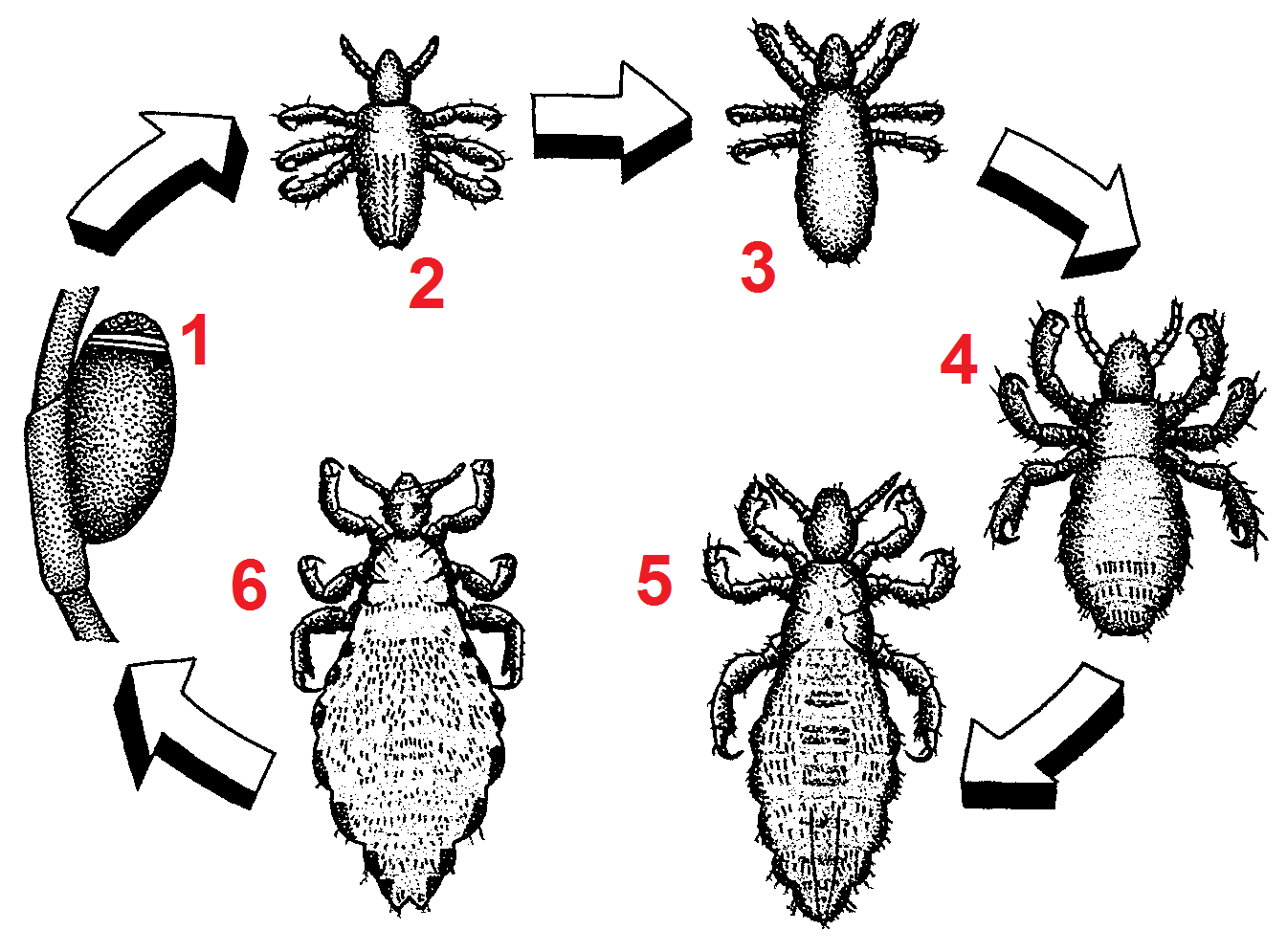|
B. Recurrentis
''Borrelia recurrentis'' is a species of ''Borrelia'', a spirochaete bacterium associated with relapsing fever. ''B. recurrentis'' is usually transmitted from person to person by the human body louse The body louse (''Pediculus humanus humanus'', also known as ''Pediculus humanus corporis'') is a hematophagic ectoparasite louse that infests humans. It is one of three lice which infest humans, the other two being the head louse, and the c .... Since the 1800s, the body louse has been known as its only known vector. ''B. recurrentis'' DNA was found in 23% of head lice from patients with louse-borne relapsing fever in Ethiopia. Whether head lice can transmit these bacteria from one person to another remains to be determined. It is notable for its ability to alter the proteins expressed on its surface, which causes the "relapsing" characteristic of relapsing fever. References recurrentis {{spirochaetes-stub ... [...More Info...] [...Related Items...] OR: [Wikipedia] [Google] [Baidu] |
Borrelia
''Borrelia'' is a genus of bacteria of the spirochete phylum. Several species cause Lyme disease, also called Lyme borreliosis, a zoonotic, vector-borne disease transmitted by ticks. Other species of ''Borrelia'' cause relapsing fever, and are transmitted by ticks or lice, depending on the species of bacteria. A few ''Borrelia'' species as ''Candidatus'' Borrelia mahuryensis harbor intermediate genetic features between Lyme disease and relapsing fever ''Borrelia''. The genus is named after French biologist Amédée Borrel (1867–1936), who first documented the distinction between a species of ''Borrelia'', ''B. anserina'', and the other known type of spirochete at the time, ''Treponema pallidum''. This bacterium must be viewed using dark-field microscopy, which make the cells appear white against a dark background. ''Borrelia'' species are grown in Barbour-Stoenner-Kelly medium. Of 52 known species of ''Borrelia'', 20 are members of the Lyme disease group (with an additional 3 p ... [...More Info...] [...Related Items...] OR: [Wikipedia] [Google] [Baidu] |
Spirochaete
A spirochaete () or spirochete is a member of the phylum Spirochaetota (), (synonym Spirochaetes) which contains distinctive diderm (double-membrane) gram-negative bacteria, most of which have long, helically coiled (corkscrew-shaped or spiraled, hence the name) cells. Spirochaetes are chemoheterotrophic in nature, with lengths between 3 and 500 μm and diameters around 0.09 to at least 3 μm. Spirochaetes are distinguished from other bacterial phyla by the location of their flagella, called endoflagella which are sometimes called ''axial filaments''. Endoflagella are anchored at each end (pole) of the bacterium within the periplasmic space (between the inner and outer membranes) where they project backwards to extend the length of the cell. These cause a twisting motion which allows the spirochaete to move about. When reproducing, a spirochaete will undergo asexual transverse binary fission. Most spirochaetes are free-living and anaerobic, but there are numero ... [...More Info...] [...Related Items...] OR: [Wikipedia] [Google] [Baidu] |
Bacterium
Bacteria (; singular: bacterium) are ubiquitous, mostly free-living organisms often consisting of one biological cell. They constitute a large domain of prokaryotic microorganisms. Typically a few micrometres in length, bacteria were among the first life forms to appear on Earth, and are present in most of its habitats. Bacteria inhabit soil, water, acidic hot springs, radioactive waste, and the deep biosphere of Earth's crust. Bacteria are vital in many stages of the nutrient cycle by recycling nutrients such as the fixation of nitrogen from the atmosphere. The nutrient cycle includes the decomposition of dead bodies; bacteria are responsible for the putrefaction stage in this process. In the biological communities surrounding hydrothermal vents and cold seeps, extremophile bacteria provide the nutrients needed to sustain life by converting dissolved compounds, such as hydrogen sulphide and methane, to energy. Bacteria also live in symbiotic and parasitic relationshi ... [...More Info...] [...Related Items...] OR: [Wikipedia] [Google] [Baidu] |
Relapsing Fever
Relapsing fever is a vector-borne disease caused by infection with certain bacteria in the genus ''Borrelia'', which is transmitted through the bites of lice or soft-bodied ticks (genus ''Ornithodoros''). Signs and symptoms Most people who are infected develop sickness between 5 and 15 days after they are bitten. The symptoms may include a sudden fever, chills, headaches, muscle or joint aches, and nausea. A rash may also occur. These symptoms usually continue for 2 to 9 days, then disappear. This cycle may continue for several weeks if the person is not treated. Causes Louse-borne relapsing fever Along with ''Rickettsia prowazekii'' and ''Bartonella quintana'', ''Borrelia recurrentis'' is one of three pathogens of which the body louse (''Pediculus humanus humanus'') is a vector. Louse-borne relapsing fever is more severe than the tick-borne variety. Louse-borne relapsing fever occurs in epidemics amid poor living conditions, famine and war in the developing world. It is c ... [...More Info...] [...Related Items...] OR: [Wikipedia] [Google] [Baidu] |
Human Body Louse
The body louse (''Pediculus humanus humanus'', also known as ''Pediculus humanus corporis'') is a hematophagic ectoparasite louse that infests humans. It is one of three lice which infest humans, the other two being the head louse, and the crab louse or pubic louse. Despite the name, body lice do not directly live on the host. They lay their eggs on fibres of clothing and only come into contact with the host whenever they need to feed. Since body lice cannot jump or fly, they spread by direct contact with another person or more rarely by contact with clothing or bed sheets that are infested. Body lice are disease vectors and can transmit pathogens that cause human diseases such as epidemic typhus, trench fever, and relapsing fever. In developed countries, infestations are only a problem in areas of poverty where there is poor body hygiene, crowded living conditions, and a lack of access to clean clothing. Outbreaks can also occur in situations where large groups of people ... [...More Info...] [...Related Items...] OR: [Wikipedia] [Google] [Baidu] |


